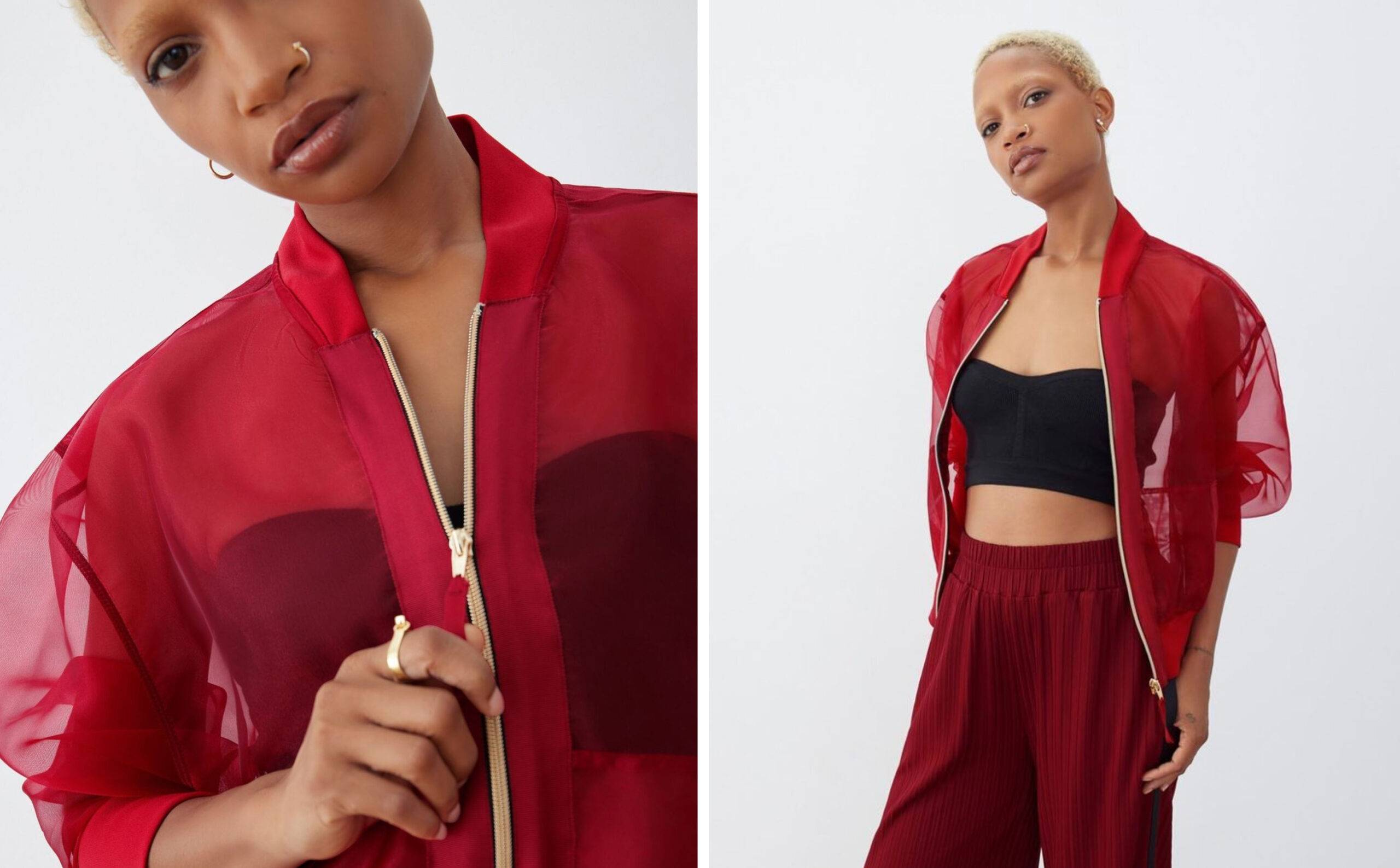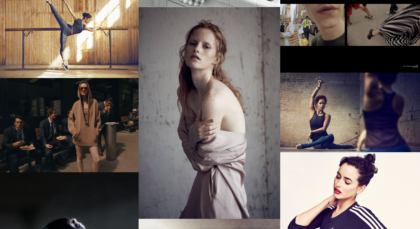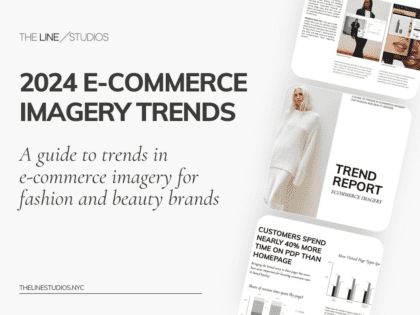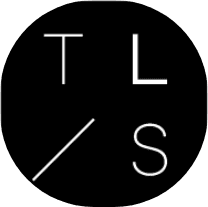It’s becoming increasingly difficult for e-commerce businesses to keep up with their e-commerce website’s imagery and creative production needs. More platforms demand more content, as increased competition jostles for market share and budgets remain flat. To counter this, The Line Studios has created an innovative strategy for asset production: Agile Imagery – a new type of imagery asset that can be used by brands across multiple platforms for multiple purposes, especially on their e-commerce websites.
Challenging Times for E-Commerce Brands
E-commerce brands have had a rough time of it lately. Those who survived the economic chaos caused by the pandemic have found their growth plans hampered by increased consumer data regulation. (See our post on Creative Strategies to Help E-Com Brands Stay Front and Center)
All the while – and despite budgets remaining the same – fresh brand imagery is urgently needed to feed the company’s insatiable content calendar. The demand is underscored by the knowledge that new competitors are popping up every week, feverishly announcing how they are going to disrupt the fashion/cosmetics/mattress industry like never before!
The Competition is Strong
This fight for market share is as aggressive as it has ever been. Case in point: the number of online stores doubled from 2020 to 2021. And with over 26 million e-commerce websites today, the competition facing DTC brands and multi-brand retailers is relentless.
Of course, brands are aware of this. According to 350 global commerce decision-makers surveyed by Shopify, competition was the biggest obstacle to achieving growth in 2022.
Brands have to be everywhere, all at once
To dial up the intensity even further, brands are being stretched like never before as they try to create and sustain a presence across an ever-growing field of channels: TikTok, Instagram, Pinterest, YouTube, and the list goes on. And presence isn’t just about showing up, but rather engaging and enticing audiences with fresh new content.
“Consumers are now used to brands being omnipresent online, and with the battle for attention-getting fiercer every day a multi-channel approach is the only way to remain top of mind”, says Ryan Turner of E-commerce Intelligence.
“Customers are also starting to use platforms other than search engines to conduct online searches – YouTube and TikTok are great examples –– so having a presence everywhere is key.”
The Old Way: Different Product Photos for Different Brand Needs
Up until now, it has been understood that brands should use different product imagery across their e-commerce websites, as well as throughout their marketing and social content, depending on their use case.
Campaign Imagery
For top-of-the-funnel, awareness-driving messages, brands tend to use more editorialized campaign shots. The purpose is to show – in an elevated, aspirational way – how the products could fit into the lives of the brands’ customers by building an emotional connection. The pictures are part of a brand story in which the customer is at the center. Generally, these images have more movement, props, unique crops, and textures –– think of Zara’s imagery, or take this example below from jewelry brand JULIE VOS.

Product Imagery
On the other hand, detail-focused, more functional product shots are typically used on the product listing page and product detail page as a means of converting site visitors hovering over the “buy” button. Often shot on a white or off-white background, the product shots are all about answering any lingering questions the customer might have – i.e. what type of clasp does the handbag have? Does the jacket have inner pockets?
Here’s an example: after seeing a campaign ad in a magazine, the customer has come into the store and is now trying on the blouse / checking out how the ring looks on their finger / getting a sense of the moisturizer’s texture.
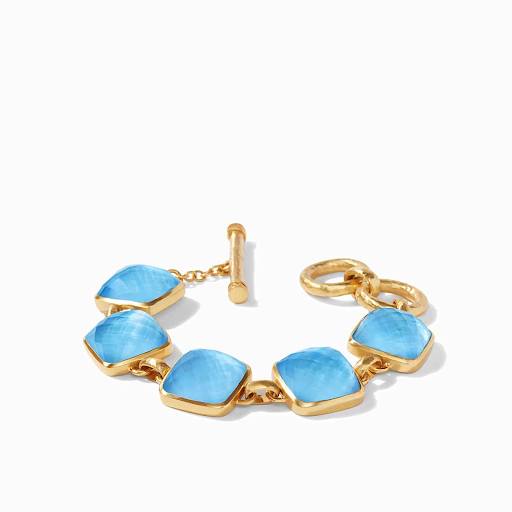
If the campaign photo appeals to the “want” of the customer’s heart, then the product photo is affirming the “need” of their logic.
Two very different photographs, for two very different points in the sales journey.
But what if these two photographs could be combined into one?
Introducing a New Approach to Creative Production: Agile Imagery
What is Agile Imagery?
Agile Imagery is product photography that is deliberately shot to inspire emotional connection while continuing to clearly demonstrate the product details.
“If you are thinking of imagery types on a sliding scale, with straightforward product shots on the left and full-blown campaign imagery on the right, these would fall right in the middle.” – Lindsay More Nisbett, co-founder of The Line Studios
So a single creative asset can be used across more than one brand channel. The same shot could be used across your entire e-commerce website and in marketing content, for example here are some use cases:
- Homepages
- Product listing pages
- Social media feeds
- Digital ads
- Product detail pages
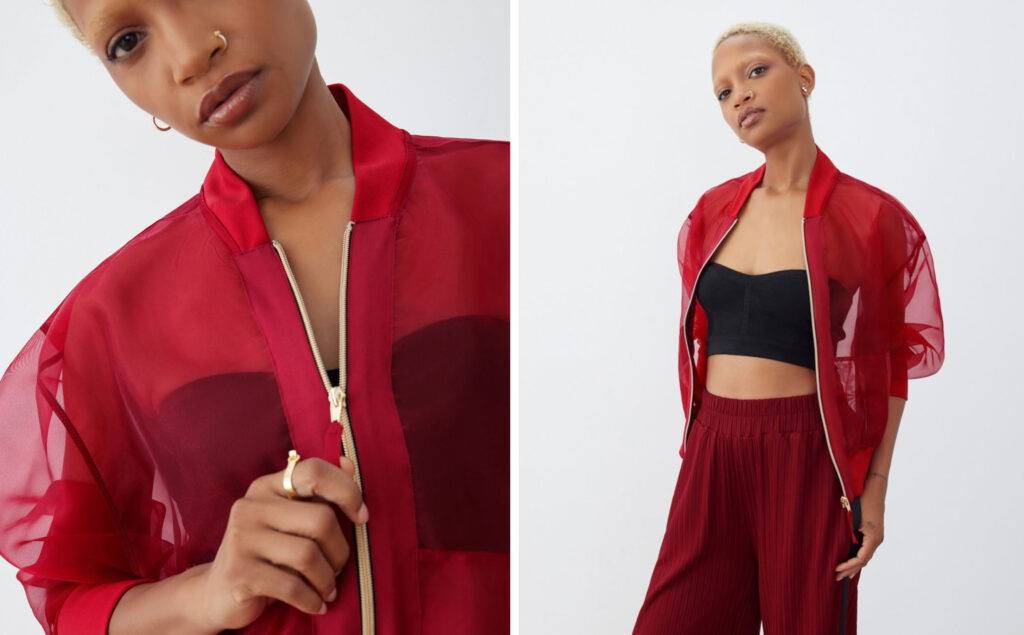
Take GSTQ as an example. The brand uses Agile Imagery to create a scalable solution for its product photography. These images are as at home on their storefront as on their social channels, creating a consistent brand story across mediums.
Key Attributes of Agile Imagery in Creative Production
- Unique to the brand – Agile assets aren’t your typical white backdrop product images; instead, they’re shot in a way that lets the brand’s personality shine through.
- Adaptable to multiple platforms – Images are versatile to the use case, whether it be webpages, social media content, or ad campaigns.
- Uniquely expressive in some way – Assets are distinct in their appearance whether it’s their styling, editing, background, or posing.
The Benefits of Agile Imagery
Save Money
Because Agile Imagery shots require more “editorialization” than standard on-white product shots, they tend to take longer to prepare and shoot. However, the extra time needed is more than offset by the decrease in the number of total shots needed by the brand.
Generally, we have seen brands save approximately 10% when they adopt Agile Imagery into their e-commerce photography strategy. For a typical campaign shoot, a brand’s budget is allocated toward a shoot that may produce 8-10 images. Those images are used primarily, if not exclusively, for top-of-funnel marketing messages. When brands implement Agile Imagery, those 8-10 images can be used in many more ways, and as a result, the brand’s budget goes much further.
Brands need to be everywhere relevant conversations are taking place. For many brands, creating discrete assets for each channel is a budgetary impossibility, but Agile Imagery allows assets to be multi-purpose across platforms.
Increase Conversion Rate
Luxury womenswear brand M.M. LaFleur uses editorialized product imagery that adapts to multiple online settings, including their e-commerce website and shoppable Instagram posts. The agile assets highlight the features and quality of their products while capturing the brand’s unique identity.
This commitment to storytelling and connecting with their audience paid off – conversions increased by over 30% when the new brand imagery rolled out.
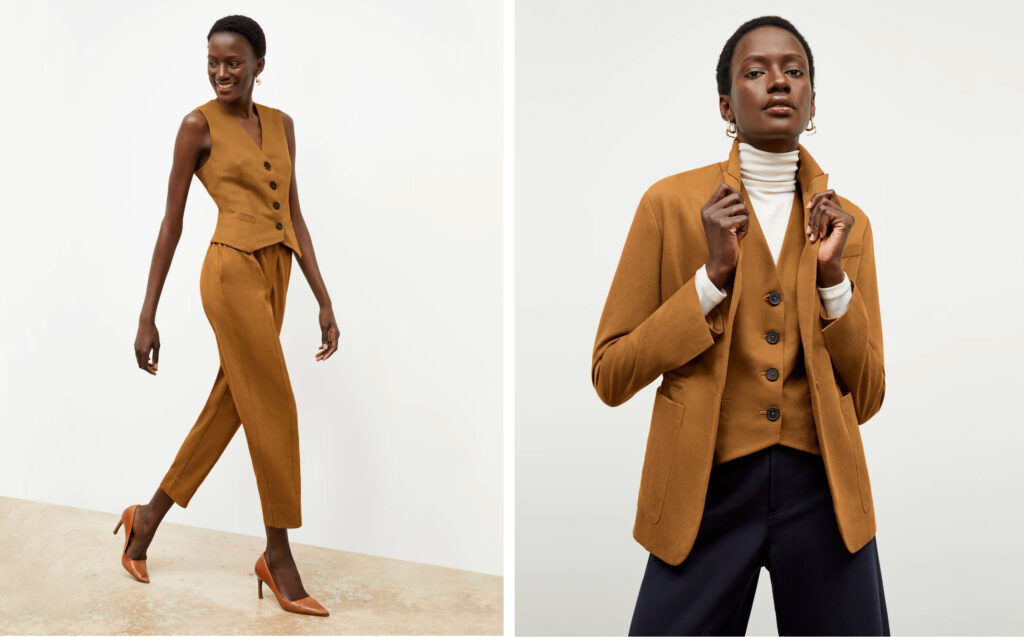
More Brand Consistency
One challenge many brands face is the discrepancy between the excitement and emotion created by the editorialized campaign imagery on Instagram and the highly functional needs of the product shots on the e-commerce website PDP.
Agile Imagery allows brands to thread their personality through the entire customer journey.
To achieve this, brands need to aggregate their asset needs when it comes to creative production. Instead of shooting several editorial and product shoots with different photographers, lighting, staging, and models, brands can do one shoot (over as many days as are needed) to capture everything in one go.
This ensures consistency in brand tonality, which is critical to instant recognition and affinity as the assets are deployed across multiple marketing and sales channels.
Improved Efficiency
Agile Imagery campaigns help foster collaboration across teams. Instead of campaigns being controlled exclusively by the creative team that generated the idea, Agile Imagery requires a cross-functional conversation to guarantee the needs of each team are met – including marketing, sales, design, creative, etc.
Plus, once your brand has created a set of agile assets, there’s no need to go and shoot multiple sets of e-commerce imagery for different campaigns – meaning your brand won’t need to start from scratch when it’s time to launch a TikTok ad campaign or set up an Instagram Shop.
Create once, use again and again. And again.
Repurposing content is a la mode in 2023. For good reason too –– it saves your brand valuable budget. And right now, 61% of content marketers say that repurposing existing content is their most efficient tactic.
When brands shoot Agile Imagery campaigns, the aim is always to make their creative input go further.
With a solid agile imagery strategy in place, brands can supercharge their creative output. In just one e-commerce shoot, brands can create 100 or more images. Later these images or media can be edited, cut, cropped, and spliced to meet the content requirements of any of their chosen media channels.

“Content repurposing is one of the best ways to get the most out of image shoots and ensure your creatives are optimized for use on multiple channels. Images and video can easily be cut up in ways which are tailored for each platform a brand has a presence on,” agrees Ryan Turner.
“It’s worth considering working with a designer or studio who specializes in this and can turn all kinds of creative into various image and video media that’s suitable for all social channels, including short-form videos and reels across TikTok, Instagram, and YouTube shorts.”
Creative production: how to start producing agile assets
The first step to a successful Agile Imagery campaign is a solid preparation phase. Start pre-planning well in advance, i.e. a full season before you intend to shoot the campaign. This way you can truly map out the entirety of your imagery needs.
5 steps brands must take to prepare for a successful Agile Imagery campaign:
1. Figure out your central theme: Consistency is key. Building a campaign that draws on a central theme will help keep your brand messaging consistent no matter the medium. Consider the story you want to tell your audience and how your campaign can best represent it.
2. Set a realistic budget: Be sure to factor in creative production costs like location hire, props, models, freelancers, editors, photographers, and any other external help you require.
3. Define success and be ready to measure: As part of a cross-functional brand campaign, it’s important to quantify what success looks like for all stakeholders. Not only will this keep all parties honest as data comes in, but will also allow the brand to finetune its efficacy moving forward.
4. Create a creative production timeline: Factor in all the time your internal team needs from campaign ideation through to the launch date. Always bake in additional time for unexpected delays along the way. Again, a solid creative production company will put this together, and factor in all the important details so nothing gets lost or missed along the way.
5. Recruit talent early: As you define your e-commerce imagery campaign, think about who you’ll need on-set. Start searching for and hiring any additional freelancers you need to complete your team. Top-tier photographers and stylists are usually booked months out, so securing your preferred team early will make sure you have who you need to express your brand in the best way possible. And, per point 1 above, you want to opt for the same setting, lighting, photographers, models, and editing style. That doesn’t mean to say each of your images will look the same –– you will likely vary the products featured, the angle of the shot, and the included props.
The Future of E-Commerce Imagery is Agile
It is more critical than ever that brands stand out / occupy a clear space in the consumers’ consideration set. But just as brands will want to spend more to highlight their point of difference, they are generally being held to the same or even decreasing marketing budgets.
Agile Imagery is a cost-effective solution that allows brands to tell their unique, differentiated story across a multitude of different platforms – from social media to the e-commerce website PDP – using versatile assets that are specifically designed to be repurposed.
It might just leave brands wondering about all the new and original ways they could be using their imagery to reach new consumers across different channels.
Looking for creative production support with your next e-commerce imagery campaign? Feel free to reach out to us at hello@thelinestudios.nyc.

